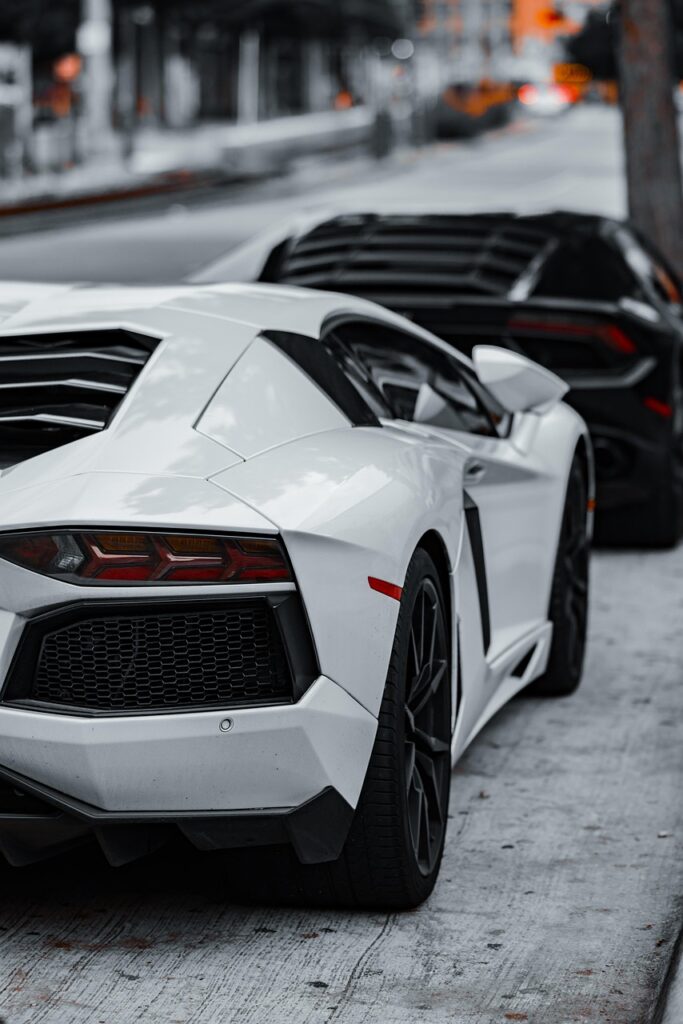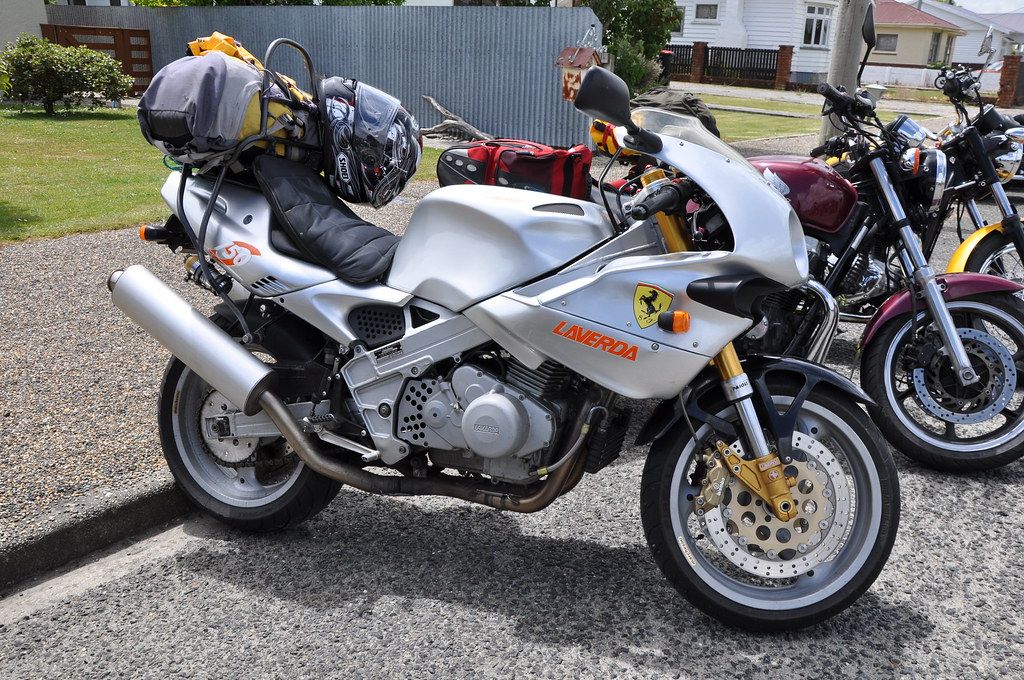
The 1970s roar was unlike any other, a period when American automakers truly unleashed their creative and engineering prowess to define an era of automotive might. It was a golden age, marked by audacious power, distinctive design, and an undeniable attitude that continues to captivate enthusiasts decades later. These machines were more than mere transportation; they were bold statements of power and style, vehicles that embodied the spirit of freedom and rebellion on the open road.
Even today, the sheer presence of these 1970s muscle cars is impossible to ignore. Whether it’s the visceral thrill of their throaty exhaust notes, the aggressive lines that cut through the air, or the legend surrounding their performance, these automobiles remain highly sought after by car enthusiasts and collectors alike. Each model tells a compelling story, reflecting not only the prevailing trends of the time but also the profound passion of those who conceived and drove them, leaving an indelible mark on automotive history.
Underneath their flashy paint and wide tires were engines built for one thing: speed. Manufacturers pushed the limits, rolling out legends that would forever etch their names into the muscle car hall of fame. We are about to embark on an exhilarating journey through the crème de la crème, exploring seven of these iconic muscle cars from the 1970s that were truly at the peak of their powers, models that continue to demand attention and admiration from every corner of the automotive world.
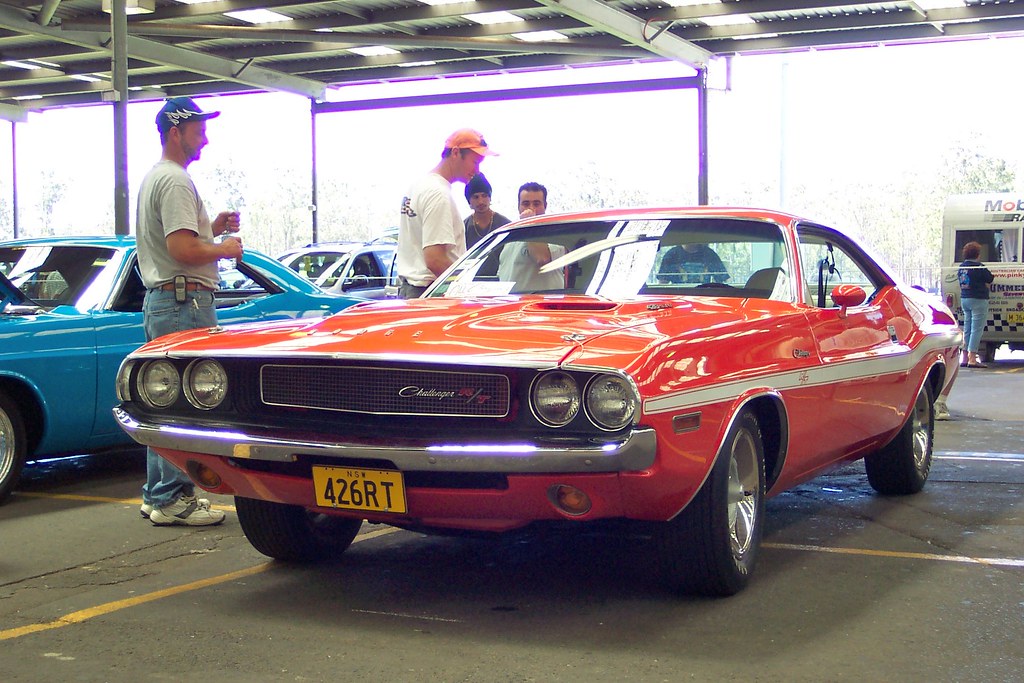
1. **1970 Dodge Challenger R/T**The 1970 Dodge Challenger R/T made an immediate and undeniable mark as a serious muscle car contender, establishing itself as a dominant force right from its introduction. Its aggressive styling was matched by an equally potent performance profile, particularly when equipped with the optional 440 Six Pack engine. This powerhouse setup ensured the Challenger was not just a looker but a formidable machine that was every bit as fast as its menacing appearance suggested, delivering around 390 horsepower to the pavement.
The design of the Challenger was truly ahead of its time, featuring a wide body and a bold front grille that commanded attention on any street or strip. Its iconic stance and robust lines were instantly recognizable, contributing significantly to its lasting appeal. The Challenger offered multiple engine options to cater to various preferences, but the R/T variant was unequivocally focused on raw, unadulterated power, making no compromises on performance.
Today, the Challenger R/T’s legacy continues to resonate deeply within the muscle car community. Its unmistakable wide body, along with the distinct front grille and the loud, rumbling V8 roar, ensures that it remains impossible to miss on the road. It stands as a classic that has been immortalized in various forms of media, particularly movies, solidifying its status as a dream car for countless muscle car enthusiasts around the globe. This blend of style and visceral power makes the 1970 Challenger R/T a true benchmark.
Car Model Information: 2019 Dodge Challenger R/T Scat Pack
Name: Dodge Challenger
Production: 1969–1974,1977–1983,2008–2023
ModelYears: 1970–1974,1978–1983,2008–2023
Caption: 2015 Dodge Challenger SRT Hellcat
Manufacturer: Dodge
Categories: 1970s cars, 1980s cars, 2000s cars, 2010s cars, 2020s cars
Summary: The Dodge Challenger is the name of three generations of automobiles produced by the American automobile manufacturer Dodge. However, the first use of the Challenger name by Dodge dates back to 1959 for marketing a “value version” of the full-sized Coronet Silver Challenger.
From model years 1970 to 1974, the first-generation Dodge Challenger pony car was built using the Chrysler E platform in hardtop and convertible body styles sharing significant components with the Plymouth Barracuda.
The second generation, from model years 1978 to 1983, was a rebadged Mitsubishi Galant Lambda / Sapporo, a coupe version of an economical compact car.
The third and current generation is a full-size muscle car that was introduced in early 2008 initially as a rival to the evolved fifth generation Ford Mustang and the fifth generation Chevrolet Camaro.
In November 2021, Stellantis announced that the 2023 model year would be the final model year for both the LD Dodge Charger and LA Dodge Challenger, as the company will focus its plans on electric vehicles rather than fossil fuel-powered vehicles, due to tougher emissions standards required by the Environmental Protection Agency for the 2023 model year. Challenger production ended on December 22, 2023, and the Brampton, Ontario, assembly plant will be re-tooled to assemble an electrified successor.
Get more information about: Dodge Challenger
Buying a high-performing used car >>>
Brand: Dodge Model: Challenger
Price: $33,392 Mileage: 41,509 mi.
Read more about: Cruising Through Time: The 12 Dream Machines of the 1960s and 1970s That Defined Automotive Greatness

2. **1971 Plymouth ‘Cuda**Representing the ultimate evolution of the Barracuda lineup, the 1971 Plymouth ‘Cuda was an undeniable force, known for its dominating presence and serious horsepower. This particular model was available with the legendary 426 HEMI engine, which bestowed upon it an almost mythical status, transforming it into a true beast on the streets. Its engineering was focused on maximizing output, delivering a performance experience that few cars of its era could rival.
What truly set the 1971 ‘Cuda apart, beyond its sheer power, were its aesthetic choices. Enthusiasts could choose high-impact colors like Plum Crazy and Lime Light, which, combined with its distinctive shaker hood and muscular stance, ensured it captured attention wherever it went. The design was both bold and purposeful, hinting at the raw performance lurking beneath its aggressive exterior, making it an instant icon of American automotive design.
If you are fortunate enough to witness one of these magnificent machines rumbling by today, there’s an immediate, visceral understanding of its significance. The 1971 ‘Cuda is undeniably one of the most iconic muscle cars to ever roll off an assembly line, its very presence a testament to a bygone era of unrestrained automotive ambition. Its rarity and historical importance only add to its desirability, making it a prized possession for any collector.
Car Model Information: 1970 Plymouth Cuda
Caption: 1970 Hardtop Coupe
Name: Plymouth Barracuda
Manufacturer: Plymouth (automobile)
Production: 1964–1974
Assembly: Fenton, Missouri,Hamtramck, Michigan,Maywood, California,Windsor, Ontario
Layout: Front-engine, rear-wheel drive layout
Class: Pony car
Categories: 1970s cars, All articles with dead external links, All articles with unsourced statements, Articles with dead external links from February 2018, Articles with dead external links from January 2022
Summary: The Plymouth Barracuda is a two-door pony car that was manufactured by Chrysler Corporation from 1964 through 1974 model years.
The first-generation Barracuda was based on the Chrysler A-body and was offered from 1964 until 1966. A two-door hardtop (no B-pillar) fastback design, it shared a great majority of parts and bodywork with the Plymouth Valiant, except for the distinctive wraparound rear glass.
The second-generation Barracuda, though still Valiant-based, was heavily redesigned. Built from 1967 through 1969, it was available as a two-door in fastback, notchback, and convertible versions.
The third generation, offered from 1970 until 1974, was based on the Chrysler E-body, exclusive to it, and the slightly larger Dodge Challenger. A completely new design, the two-door Barracuda was available in hardtop and convertible body styles.
Get more information about: Plymouth Barracuda
Buying a high-performing used car >>>
Brand: Plymouth Model: ‘Cuda
Price: $72,900 Mileage: 19,836 mi.
Read more about: Burning Rubber and Breaking Hearts: 15 Iconic 1970s Muscle Cars That Still Reign Supreme
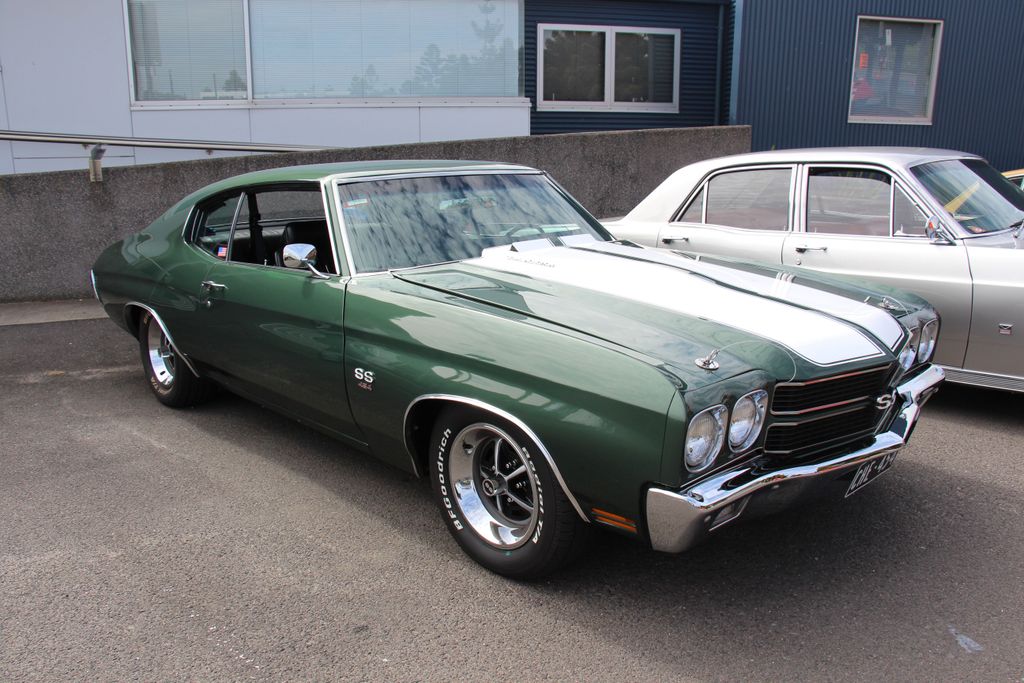
3. **1970 Chevrolet Chevelle SS 454**The 1970 Chevrolet Chevelle SS 454 holds an almost legendary status among muscle cars, and for very good reason. This particular model was equipped with the LS6 engine, an engineering marvel that produced an astonishing 450 horsepower and 500 lb-ft of torque. This immense power made it one of the most formidable and powerful cars of its time, setting a high bar for performance within the muscle car segment and delivering a thrilling driving experience.
Beyond its unparalleled power, the Chevelle’s design was a masterclass in aggressive aesthetics, balancing sleek lines with a menacing stance. It often featured bold stripes that accentuated its wide body, creating a visual statement that was as impactful as its performance. This striking combination of raw power and aggressive styling quickly cemented its status as an enduring fan favorite, distinguishing it from many of its contemporaries.
When a Chevelle SS 454 arrives at a car show today, it invariably draws a crowd. People gather instinctively to admire this brute from the ’70s, captivated by its heritage and its imposing presence. Its reputation as a benchmark for muscle cars during its era is well-deserved, making it a must-know for any enthusiast of classic American performance vehicles. The Chevelle SS 454 is a true symbol of automotive excellence.
Car Model Information: 2024 Honda Civic LX
Name: Chevrolet Chevelle
Caption: 1970 Chevrolet Chevelle SS 396 Sport Coupe
Manufacturer: Chevrolet
Production: 1963–1977
ModelYears: 1964–1977
Class: Mid-size
Platform: GM A platform (RWD)
Layout: FR layout
Successor: Chevrolet Malibu
Categories: 1970s cars, All articles needing additional references, All articles that may contain original research, All articles with specifically marked weasel-worded phrases, All articles with unsourced statements
Summary: The Chevrolet Chevelle is a mid-sized automobile that was produced by the Chevrolet division of General Motors (GM) in three generations for the 1964 to 1977 model years. Part of the GM A-body platform, the Chevelle was one of Chevrolet’s most successful nameplates. Body styles included coupes, sedans, convertibles, and station wagons. The “Super Sport” versions were produced through the 1973 model year and Lagunas from 1973 through to 1976.
After a four-year absence, the El Camino was reintroduced as part of the new Chevelle lineup in 1964.
From 1964 to 1969, GM of Canada sold a modified version of the Chevelle that included a Pontiac-style grille, and a LeMans instrument panel, marketed as the Beaumont.
The Malibu was the top-of-the-line model to 1972, and completely replaced the Chevelle nameplate starting with the redesigned, and downsized 1978 model year.
Get more information about: Chevrolet Chevelle
Buying a high-performing used car >>>
Brand: Chevrolet Model: Chevelle SS 454
Price: $21,650 Mileage: 17,979 mi.
Read more about: Cruising Through Time: The 12 Dream Machines of the 1960s and 1970s That Defined Automotive Greatness

4. **1970 Ford Mustang Boss 302**The 1970 Ford Mustang Boss 302 was not merely designed; it was engineered with a singular focus on performance, specifically to compete in the demanding world of Trans-Am racing. This dedication to motorsport translated directly into its street capabilities, making it an exceptionally agile and potent machine. Under its iconic hood, it housed a high-revving 302-cubic-inch V8 engine, optimized for track-level performance and responsiveness.
Its visual appeal was equally compelling, characterized by a sleek fastback design that was both aerodynamic and aesthetically pleasing. The addition of distinctive racing stripes further solidified its image as a track-bred champion, instantly making it an instant classic in the Mustang lineage. This unique blend of form and function created a car that was as exciting to look at as it was to drive, embodying the spirit of competition.
Today, the Boss 302 remains a true head-turner, celebrated for its timeless design and the proud racing heritage embedded in its DNA. It possesses that rare quality of being instantly recognizable to muscle car enthusiasts, who can spot its distinctive profile from a mile away. On the road, this car still commands an undeniable sense of respect, a testament to its enduring legacy and its unwavering position as a performance icon within the Mustang family.
Car Model Information: 2024 Honda Civic LX
Layout: FR layout
Manufacturer: Ford Motor Company
Production: 1969–1970 and 2012–2013
Name: Boss 302 Mustang
Assembly: Dearborn, Michigan
Designer: Larry Shinoda
Engine: Ford Boss 302 engine,Overhead valve,V8 engine
Transmission: Manual transmission
Related: Ford Mustang
Class: Muscle car
BodyStyle: Fastback,Coupe
Categories: All articles needing additional references, All articles with unsourced statements, Articles needing additional references from June 2023, Articles with short description, Articles with unsourced statements from March 2024
Summary: The Mustang Boss 302 is a high-performance 302 cu in (4.9 L) H.O. V8-powered variant of the Ford Mustang originally produced by Ford in 1969 and 1970. Developed to meet homologation requirements to compete in Trans Am racing, it was Ford’s response to the success of the Chevrolet Camaro Z/28 in the 5 L (305.1 cu in) and under SCCA series since 1967. While substantial modifications were required to the stock Boss 302 to be competitive on the track, many thousands were sold to the public in a street-legal form that included a refined high-performance motor and upgrades to the suspension and brakes over base Mustangs.
Ford revived the Boss 302 name for another two year production run in 2012 and 2013.
Get more information about: Boss 302 Mustang
Buying a high-performing used car >>>
Brand: Ford Model: Mustang Boss 302
Price: $21,650 Mileage: 17,979 mi.
Read more about: Cruising Through Time: The 12 Dream Machines of the 1960s and 1970s That Defined Automotive Greatness
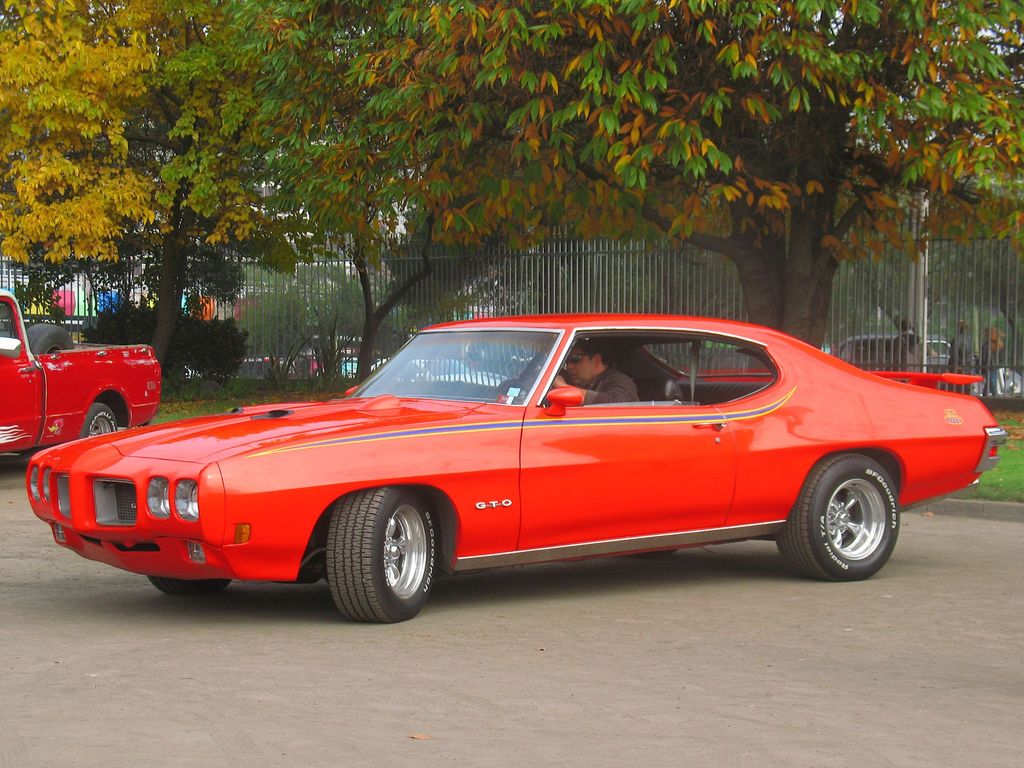
5. **1970 Pontiac GTO Judge**The 1970 Pontiac GTO Judge was far more than just another car; it was an emphatic statement, a declaration of intent on four wheels. With its wild, vibrant colors and bold, assertive graphics, the Judge was never shy about making its presence known and standing out from the crowd. It was designed to be noticed, to elicit a reaction, and it succeeded brilliantly in its audacious presentation, encapsulating the flamboyant spirit of the era.
Beneath its flamboyant exterior, the Judge packed serious power, ready to back up its visual bravado. It was equipped with the Ram Air IV 400 engine, a formidable powerplant that delivered potent performance and a thrilling driving experience. This combination of eye-catching aesthetics and robust mechanicals made it a truly compelling package for those seeking both style and substance in their muscle car.
Even in modern times, the GTO Judge’s flashy looks, combined with its unmistakable growling engine, make it impossible to overlook. Whether gracing the polished floor of a car show or cruising down city streets, the GTO Judge consistently proves to be a showstopper. It represents a pinnacle of Pontiac’s muscle car engineering and marketing, a vehicle that perfectly captured the exuberance and confidence of the early 1970s and continues to do so today.
Car Model Information: 2024 Honda Civic LX
Name: Pontiac GTO
Caption: 2005 Pontiac GTO
Manufacturer: Pontiac (automobile),Holden
Class: Mid-size car,Compact car,Mid-size car
Production: 1963–1974,2003–2006
Predecessor: Pontiac Tempest
Layout: Front-engine, rear-wheel-drive layout
ModelYears: 1964-1974 2004-2006
Categories: 1970s cars, 2000s cars, All articles with unsourced statements, Articles with short description, Articles with unsourced statements from October 2008
Summary: The Pontiac GTO is a front-engine, rear-drive, two-door, and four-passenger automobile manufactured and marketed by the Pontiac division of General Motors over four generations from 1963 until 1974 in the United States — with a fifth generation made by GM’s Australian subsidiary, Holden, for the 2004 through 2006 model years.
The first generation of the GTO is credited with popularizing the muscle car market segment in the 1960s. Some consider the Pontiac GTO to have started the trend with all four domestic automakers offering a variety of competing models.
For the 1964 and 1965 model years, the GTO was an optional package on the intermediate-sized Pontiac LeMans. The 1964 GTO vehicle identification number (VIN) started with 22, while the 1965 GTO VIN began with 237. The GTO was designated as a separate Pontiac model from 1966 through 1971 (VIN 242…). It became an optional package again for the 1972 and 1973 intermediate LeMans. For 1974, the GTO was an optional trim package on the compact-sized Ventura.
The GTO model was revived for the 2004 through 2006 model years as a captive import for Pontiac, a left-hand drive version of the Holden Monaro, itself a coupé variant of the Holden Commodore.
Get more information about: Pontiac GTO
Buying a high-performing used car >>>
Brand: Pontiac Model: GTO Judge
Price: $21,650 Mileage: 17,979 mi.
Read more about: Burning Rubber and Breaking Hearts: 15 Iconic 1970s Muscle Cars That Still Reign Supreme
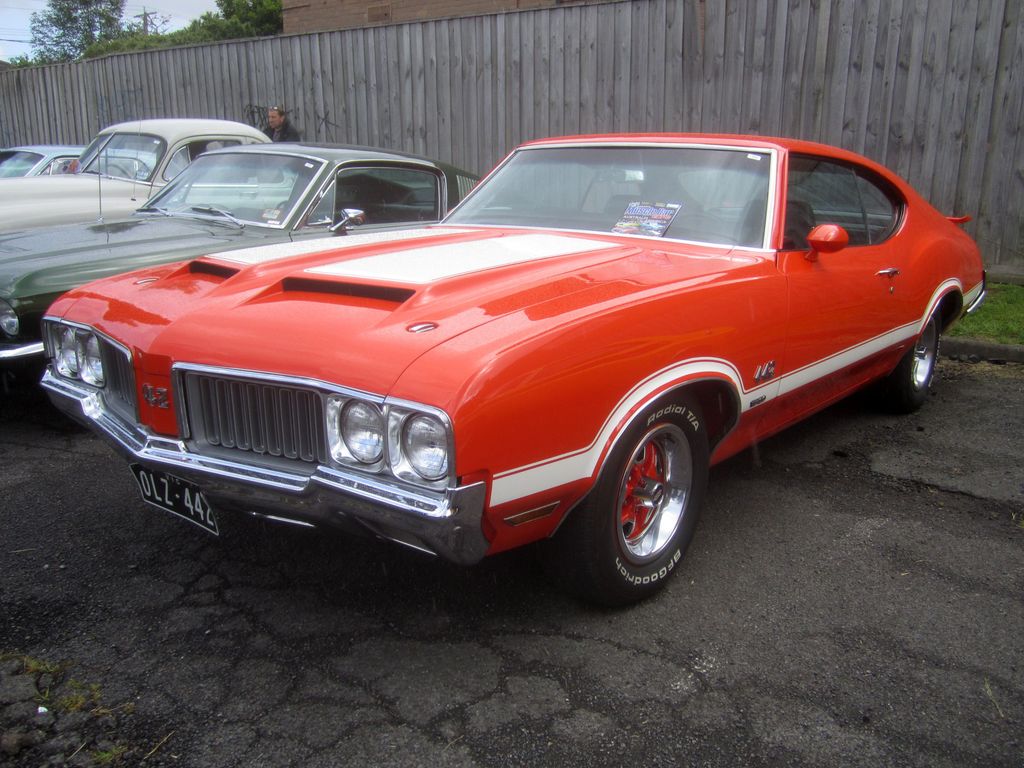
6. **1970 Oldsmobile 442 W-30**The 1970 Oldsmobile 442 W-30 had a reputation as a formidable sleeper car, capable of blowing the doors off many unsuspecting challengers. With its somewhat understated looks, one might not immediately anticipate the sheer power lurking beneath its hood, where it packed an impressive 370 horsepower and a monumental 500 lb-ft of torque. Make no mistake, despite its less ostentatious appearance, this car was unequivocally built for performance and speed.
This particular model of the 442 was a symbol of refined muscle, masterfully combining raw, brute force with an undeniable sense of class and sophistication. It didn’t overtly scream for attention with flashy graphics or over-the-top styling; rather, its appeal lay in its ability to deliver stunning performance with an air of quiet confidence. This subtle approach to power made it truly unique among its peers.
Today, the 442 W-30 continues to embody this blend of performance and elegance. It may not be the loudest car in the room, but it certainly knows how to command respect and get attention when discerning enthusiasts catch a glimpse of this understated powerhouse. Its rarity, especially the W-30 version, and its exceptional performance make it a highly sought-after classic, appreciated for its potent capabilities wrapped in a dignified package.
Car Model Information: 1969 Oldsmobile 442
Name: Oldsmobile 442
Manufacturer: Oldsmobile
ModelYears: 1964–1980,1985–1987,1990–1991
Class: Muscle car
Layout: FR layout
Caption: 1971 Oldsmobile 442
Categories: 1960s cars, 1970s cars, 1980s cars, All articles with unsourced statements, Articles with short description
Summary: The Oldsmobile 4-4-2 is a muscle car produced by Oldsmobile between the 1964 and 1987 model years. Introduced as an option package for US-sold F-85 and Cutlass models, it became a model in its own right from 1968 to 1971, spawned the Hurst/Olds in 1968, then reverted to an option through the mid-1970s. The name was revived in the 1980s on the rear-wheel drive Cutlass Supreme and early 1990s as an option package for the new front-wheel drive Cutlass Calais.
The “4-4-2” name (pronounced “Four-four-two”) derives from the original car’s four-barrel carburetor, four-speed manual transmission, and dual exhausts. It was originally written “4-4-2” (with badging showing hyphens between the numerals), and remained hyphenated throughout Oldsmobile’s use of the designation. Beginning in 1965, the 4-4-2s standard transmission was a three-speed manual along with an optional two-speed automatic and four-speed manual, but were still badged as “4-4-2″s.
Because of this change, from 1965 on, according to Oldsmobile brochures and advertisements, the 4-4-2 designation referred to the 400 cubic inch engine, four-barrel carburetor, and dual exhausts. By 1968, badging was shortened to simply “442”, but Oldsmobile brochures and internal documents continued to use the “4-4-2” model designation.
Get more information about: Oldsmobile 442
Buying a high-performing used car >>>
Brand: Oldsmobile Model: 442
Price: $43,990 Mileage: 24,000 mi.
Read more about: Cruising Through Time: The 12 Dream Machines of the 1960s and 1970s That Defined Automotive Greatness
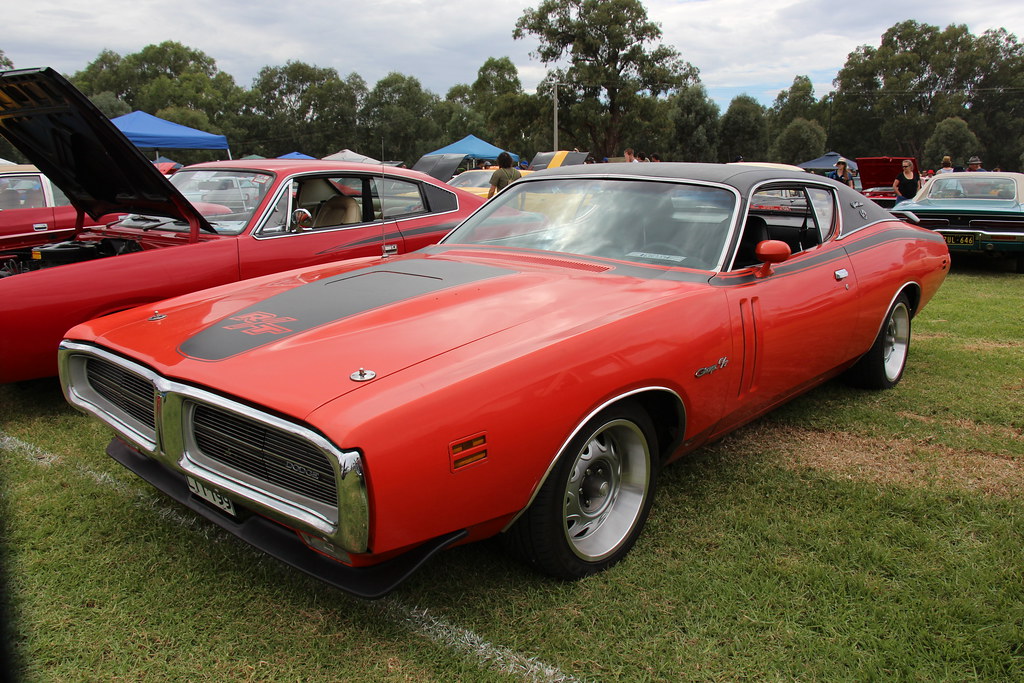
7. **1971 Dodge Charger R/T**The 1971 Dodge Charger R/T presented itself as a profoundly muscular and stylish car that steadfastly refused to compromise on performance. Its distinctive Coke-bottle design, a celebrated styling cue of the era, coupled with its innovative hidden headlights, gave it an aggressive and decidedly modern aesthetic. This visual appeal was deeply integrated with its powerful capabilities, creating a vehicle that looked as formidable as it performed.
Under the hood, the Charger R/T offered a compelling array of engine options, ensuring it could more than adequately back up its aggressive looks. Enthusiasts could choose from the optional 440 Six Pack or the legendary 426 HEMI engines, both of which provided exhilarating levels of power and torque. This potent mechanical heart, combined with its striking design, made the Charger R/T a true icon of automotive engineering and artistry.
Even today, the 1971 Charger R/T is widely celebrated for its harmonious blend of timeless style and blistering speed. Whether it’s gracefully cruising down a highway, its lines drawing admiring glances, or revving up its powerful engine at a bustling car meet, this car possesses an undeniable presence that demands attention. It remains a beloved classic, embodying the very essence of what a powerful and stylish American muscle car from the 1970s represents.
Continuing our exhilarating tour through the golden age of American muscle, we now delve deeper into the unique characteristics, engineering prowess, and lasting cultural impact of eight additional legendary 1970s machines. These vehicles further cement the decade’s status as a pinnacle of automotive ambition, revered by collectors and enthusiasts alike. Get ready to explore more raw power, distinctive design, and the unforgettable attitude that made these cars true icons.
Car Model Information: 2023 Dodge Charger SRT Hellcat Widebody Jailbreak
Name: Dodge Charger
Caption: 1969 Dodge Charger
Manufacturer: Dodge
Production: 1966–1978,1981–1987,2005–present
ModelYears: 1966–1978,1982–1987,2006–present
Categories: 1960s cars, 1970s cars, 1980s cars, 2000s cars, 2010s cars
Summary: The Dodge Charger is a model of automobile marketed by Dodge in various forms over eight generations since 1966.
The first Charger was a show car in 1964. A 1965 Charger II concept car resembled the 1966 production version.
In the United States, the Charger nameplate has been used on mid-size cars, personal luxury coupes, subcompact hatchbacks, and full-size sedans.
Get more information about: Dodge Charger
Buying a high-performing used car >>>
Brand: Dodge Model: Charger
Price: $94,975 Mileage: 4,260 mi.
Read more about: Cruising Through Time: The 12 Dream Machines of the 1960s and 1970s That Defined Automotive Greatness
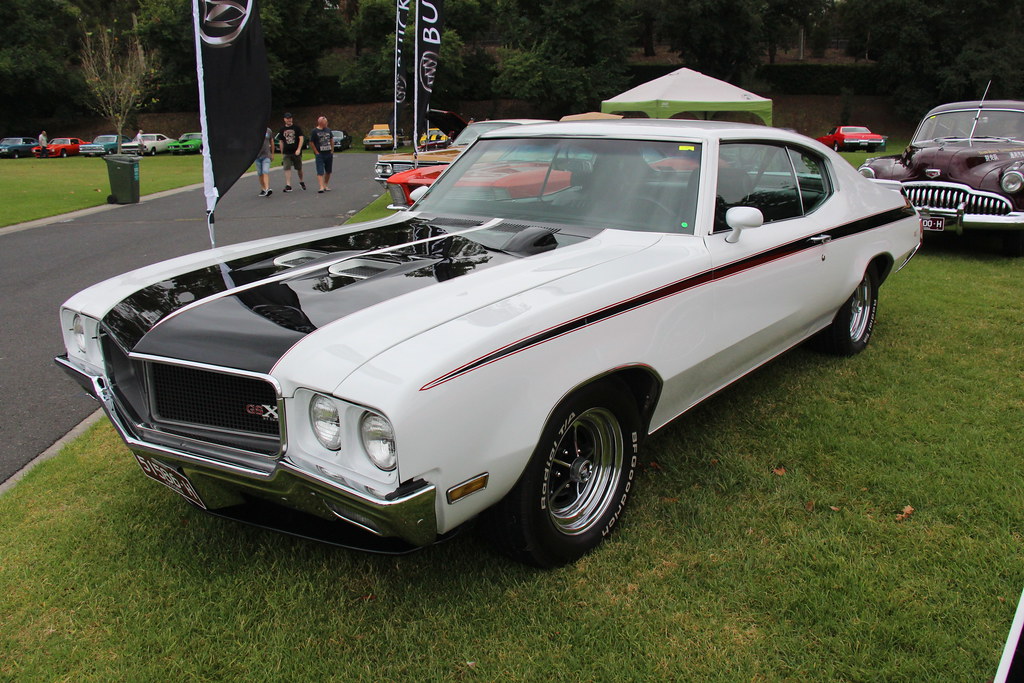
8. **1970 Buick GSX**The 1970 Buick GSX stands as a remarkable, albeit lesser-known, gem within the formidable muscle car lineup. Often overshadowed, this machine possessed an understated elegance that belied its incredible performance capabilities. Far from a mere cosmetic package, the GSX was engineered for serious speed, quickly earning a reputation among those who recognized its true potential for powerful output.
What truly set the GSX apart was its formidable heart: the massive 455 cubic inch V8 engine, especially in its Stage 1 iteration. This powerplant was a torque monster, churning out an impressive 510 lb-ft of torque. This figure was unmatched by many rivals, even those with higher horsepower ratings, translating into blistering acceleration and making the GSX one of the quickest cars off the line in its time.
Beyond its mechanical prowess, the GSX featured a distinctive design. Its bold stripes and unique styling cues commanded attention, striking a balance between aggressive sportiness and Buick’s traditional sense of refinement. With only 678 units produced in 1970, and a mere 400 of those being the highly coveted Stage 1 version, it’s an exceptionally rare and sought-after classic. Its scarcity and profound performance ensure its revered status among collectors today.
Read more about: Cruising Through Time: The 12 Dream Machines of the 1960s and 1970s That Defined Automotive Greatness
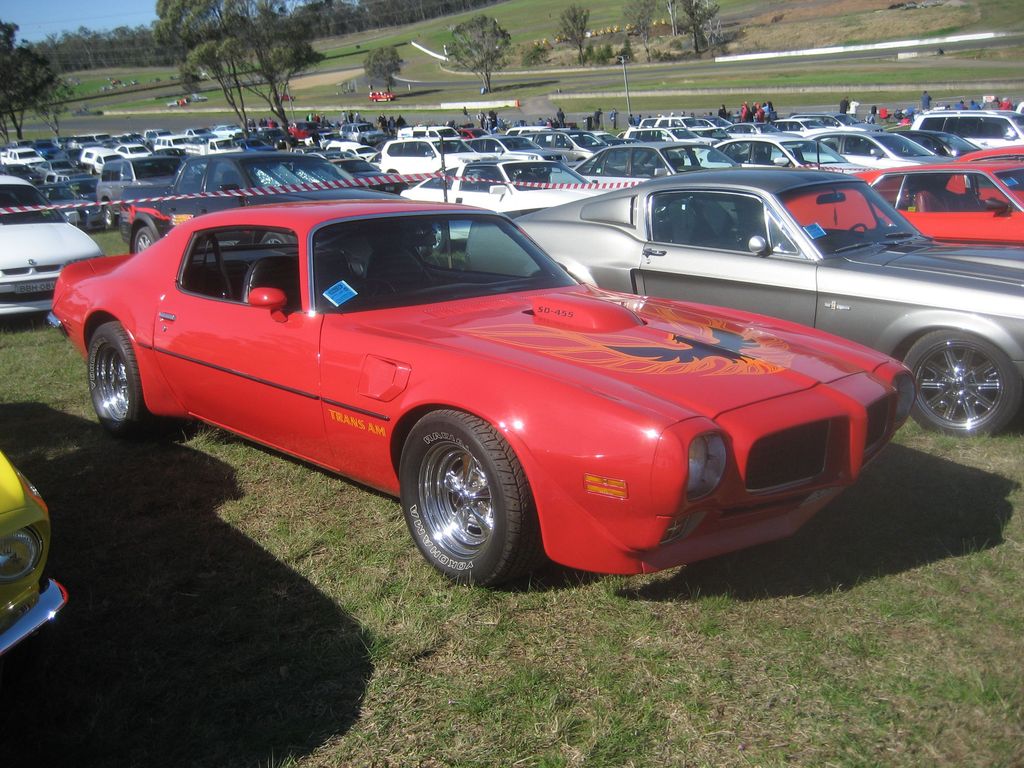
9. **1973 Pontiac Firebird Trans Am**The 1973 Pontiac Firebird Trans Am carved out its own iconic niche, evolving the muscle car breed with a distinctive personality. While later models might enjoy cinematic fame, the 1973 iteration stood strong on its own merits, projecting an undeniable attitude that was both aggressive and stylish. It was a statement of freedom and performance, a truly unforgettable machine.
Visually, the 1973 Trans Am was unmistakable. It proudly displayed the now-legendary “screaming chicken” hood decal, a graphic so audacious it became synonymous with the model. Coupled with its bold split grille and muscular body lines, the Trans Am commanded attention, exuding a sense of raw power and rebellious spirit. This dramatic styling ensured it turned heads on any street or track, embodying the essence of a truly cool ride.
Underneath its striking exterior, the Trans Am backed up its aggressive looks with serious performance. The available 400 cubic-inch V8 and the more potent 455 cubic-inch V8 continued to deliver impressive thrust, despite evolving emissions regulations. For instance, earlier ’70s 400 Ram Air III options produced up to 335 horsepower, showcasing the engineering commitment that continued to define the Trans Am’s powerful character.
The 1973 Trans Am perfectly captured the evolving spirit of the muscle car era, adapting to new challenges while retaining its core identity. Its blend of distinctive aesthetics, engaging driving dynamics, and a powerful engine pedigree cemented its status as a cultural icon. Even today, this Trans Am radiates a timeless coolness, making it a perennial favorite at car shows and a prized possession for enthusiasts.
Car Model Information: 2024 Honda Civic LX
Name: Pontiac Firebird
Caption: The second, third, and fourth generations of,the Pontiac Firebird Trans Am
Manufacturer: Pontiac (automobile)
Production: February 23, 1967 – August 30, 2002
ModelYears: 1967 – 2002
Class: Pony car,Muscle car
Platform: GM F platform
Related: Chevrolet Camaro
Layout: Front engine, rear-wheel-drive layout
Categories: 1970s cars, 1980s cars, 1990s cars, 2000s cars, All articles with dead external links
Summary: The Pontiac Firebird is an American automobile built and produced by Pontiac from the 1967 to 2002 model years. Designed as a pony car to compete with the Ford Mustang, it was introduced on February 23, 1967, five months after GM’s Chevrolet division’s platform-sharing Camaro. This also coincided with the release of the 1967 Mercury Cougar, Ford’s upscale, platform-sharing version of the Mustang.
The name “Firebird” was also previously used by GM for the General Motors Firebird series of concept cars in the 1950s.
Get more information about: Pontiac Firebird
Buying a high-performing used car >>>
Brand: Pontiac Model: Firebird Trans Am
Price: $21,650 Mileage: 17,979 mi.
Read more about: Cruising Through Time: The 12 Dream Machines of the 1960s and 1970s That Defined Automotive Greatness
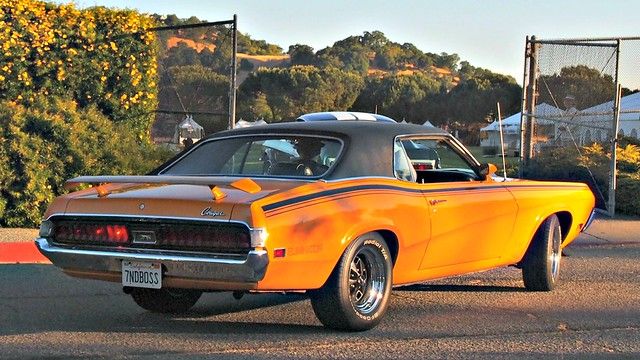
10. **1970 Mercury Cougar Eliminator**Mercury’s definitive answer to the burgeoning muscle car phenomenon was the 1970 Cougar Eliminator, a formidable machine designed to carve out its own aggressive territory. This wasn’t merely a luxurious grand tourer; the Eliminator was a focused performance variant, meticulously styled and engineered for a thrilling driving experience against its Ford Mustang cousin. It embodied a blend of refinement and raw power.
Visually, the Eliminator was an immediate attention-grabber. It featured bold racing stripes, an integrated rear spoiler, and a distinctive scoop on the hood, all contributing to an aerodynamic and menacing profile. This sleek design, complemented by a comfortable interior, created a unique blend of sporty aggression and a touch of Mercury’s signature sophistication. This aesthetic made it stand out as a refined yet undeniably potent muscle car.
Powering the Eliminator was a choice of potent V-8 engine options, including a robust 351 cubic inch engine. For even more exhilarating performance, the optional 428 Cobra Jet engine was available, transforming the Cougar into a true powerhouse. With 0-60 mph times typically around 6.6 seconds, the Eliminator was a serious contender, demonstrating Mercury’s commitment to the muscle car ethos with undeniable authority.
Car Model Information: 2024 Honda Civic LX
Name: Mercury Cougar
Caption: 1969 Mercury Cougar (first generation)
Manufacturer: Mercury (automobile)
Layout: Front-engine, rear-wheel-drive layout
ModelYears: 1967–1997,1999–2002
Class: Pony car,Personal luxury car,Mid-size car,Sport compact
Categories: 1960s cars, 1970s cars, 1980s cars, 1990s cars, 2000s cars
Summary: The Mercury Cougar is a series of automobiles that was sold by Mercury from 1967 to 2002. The model line is a diverse series of vehicles; though the Cougar nameplate is most commonly associated with two-door coupes, at various stages in its production, the model also was offered as a convertible and a hatchback. During its production as the mid-size Mercury line, the Cougar was also offered as a four-door sedan and five-door station wagon.
In production for 34 years across eight generations (skipping the 1998 model year), the Cougar is second only to the Grand Marquis (36 years) in the Mercury line for production longevity. 2,972,784 examples were produced, making it the highest-selling Mercury vehicle. During the 1970s and 1980s, the marketing of the Mercury division was closely associated with the Cougar, with promotional materials advertising Mercury dealers as “The Sign of the Cat” with big cats atop Lincoln-Mercury dealer signs. Cat-related nameplates were adopted by other Mercury lines, including the Bobcat and Lynx.
During its production, the Cougar was assembled at the Dearborn Assembly Plant (part of the Ford River Rouge Complex) in Dearborn, Michigan from 1967 until 1973, San Jose Assembly (Milpitas, California) from 1968 into early 1969, Lorain Assembly (Lorain, Ohio) from 1974 until 1997, and at Flat Rock Assembly (Flat Rock, Michigan) from 1999 through 2002.
Get more information about: Mercury Cougar
Buying a high-performing used car >>>
Brand: Mercury Model: Cougar Eliminator
Price: $21,650 Mileage: 17,979 mi.
Read more about: Beyond the Big Three: 15 Forgotten Car Brands from the ’60s and ’70s That Deserve Another Look
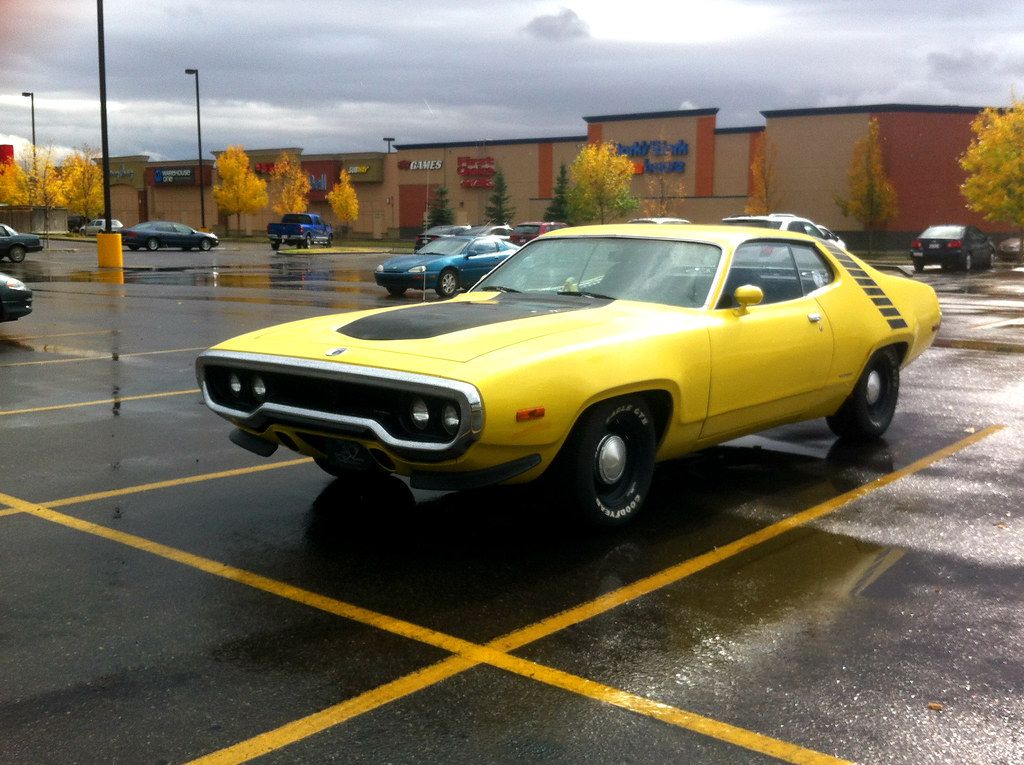
11. **1972 Plymouth Road Runner**The 1972 Plymouth Road Runner injected a healthy dose of playful irreverence into the serious business of muscle car performance. Famously borrowing its name and iconic “beep beep” horn from the beloved Looney Tunes character, this car was a testament to Plymouth’s ability to combine high-octane fun with genuine street prowess. It defied conventions, proving that power could indeed come with a sense of humor.
Despite the cartoonish branding, the Road Runner was no joke on the pavement. It offered formidable engine options designed for raw power, including the legendary 440 Six Pack. This potent setup delivered immense horsepower and torque, ensuring that while the car might bring a smile, it was ready to leave others in the dust. Its impressive acceleration and robust capabilities made it a true performer.
The Road Runner’s design was sleek and purposeful, embodying the classic muscle car aesthetic with its aggressive stance and clean lines. This unique blend of muscle and distinctive character made it an instant favorite, appealing to drivers who wanted both a formidable performer and a car with undeniable personality. Even decades later, its fun-loving spirit and serious muscle ensure its place as a beloved classic, always capturing hearts.
Car Model Information: 2024 Honda Civic LX
Name: Plymouth Road Runner
Assembly: Detroit,Michigan
Manufacturer: Plymouth (automobile)
Class: Mid-size car
Production: 1968–1980
Related: unbulleted list
Layout: FR layout
Categories: 1970s cars, 1980s cars, All articles needing additional references, All articles with peacock terms, All articles with unsourced statements
Summary: The Plymouth Road Runner is a muscle car introduced by Chrysler in the United States for the 1968 model year and marketed under its Plymouth brand. Initially based on the Belvedere, the brand’s basic mid-size model, the Road Runner combined a powerful engine with a spartan trim level and a price that undercut increasingly upscale and expensive muscle cars such as the Pontiac GTO and Plymouth’s own GTX. It was initially a sales success.
The Road Runner was built in three generations on the mid-size B platform. Like most muscle cars, its performance and sales declined in the 1970s due to an increasing focus on fuel economy and the adoption of more stringent U.S. emission standards. The nameplate became to a trim package for the compact Plymouth Volaré for model year 1976—no longer offering any special performance capability—and was discontinued in 1980.
Get more information about: Plymouth Road Runner
Buying a high-performing used car >>>
Brand: Plymouth Model: Road Runner
Price: $21,650 Mileage: 17,979 mi.
Read more about: Cruising Through Time: The 12 Dream Machines of the 1960s and 1970s That Defined Automotive Greatness

12. **1970 AMC Rebel Machine**The 1970 AMC Rebel Machine was a bold declaration from a manufacturer often perceived as an underdog, daring to stand out in a highly competitive market. AMC channeled a distinctive, patriotic spirit into this model, making it not just a performance car but an unmistakable statement on wheels. It was an ambitious foray into high-performance, and it made its presence known with conviction.
Visually, the Rebel Machine was audacious, featuring a striking red, white, and blue color scheme that was impossible to ignore. This vibrant graphic package, combined with its aggressive stance and functional ram-air hood scoop, immediately set it apart. AMC was not shy about making a visual impact, ensuring the Rebel Machine grabbed attention wherever it roared, embodying a rebellious and confident American spirit.
Powering this patriotic powerhouse was a robust 340-horsepower engine. While its power figures might seem moderate compared to some absolute monsters, when housed in the lightweight Rebel body, those horses allowed the Machine to truly fly. This clever combination of engine output and reduced weight made it one of the fastest cars available, delivering exhilarating acceleration and a dynamic driving experience.
Today, the 1970 AMC Rebel Machine is considered a rare find and a highly prized collector’s item. Its scarcity, distinctive design, and solid performance credentials make it a true must-see at any car gathering. It stands as a testament to AMC’s innovative spirit and its unique contribution to the diverse tapestry of 1970s muscle cars, proving that even smaller players could pack a mighty punch.
Car Model Information: 2024 Honda Civic LX
Caption: 1968 AMC Rebel 770 station wagon
Name: AMC Rebel
Aka: Australia,Mexico,Europe
Manufacturer: American Motors Corporation
Production: 1967–1970 (US market)
ModelYears: 1967–1970 (US market)
Assembly: Australia
Class: Mid-size car
BodyStyle: sedan (car),convertible,hardtop,4-door sedan,station wagon
Engine: 232 CID
Abbr: on approx.
Transmission: Manual transmission,Overdrive (mechanics),4-speed manual floor or console,Automatic transmission,3-speed “Shift-Command” on console
Layout: Front-engine, rear-wheel drive layout
Wheelbase: 114 in
Length: {{convert,197,in,mm,0,abbr=on
Width: 77.29 in
Height: 53.5 in
Weight: 3500 lb
Platform: AMC’s “senior cars”
Predecessor: Rambler Classic
Successor: AMC Matador
Related: AMC Ambassador
Categories: 1970s cars, AMC vehicles, All articles with dead external links, Articles with dead external links from July 2023, Articles with permanently dead external links
Summary: The AMC Rebel (known as the Rambler Rebel in 1967) is a midsized car produced by American Motors Corporation (AMC) from the 1967 until the 1970 model year. It replaced the Rambler Classic. A similar AMC Matador line replaced the Rebel models, starting with the 1971 model year.
The Rebel was positioned as the high-volume seller in the independent automaker’s line of models. The Rebel was also available in several specialty models, including station wagons featuring themed trim and luxury equipment offered only in selected geographical regions. A high-performance, low-priced muscle car version was produced in 1970, the Machine, which is most recognized in its flamboyant white, red, and blue trim.
The Rebel is the shorter-wheelbase, intermediate-sized version of the longer-wheelbase, full-sized Ambassador line.
The Rebel was built at AMC’s West Assembly Line (along with the Ambassador) in Kenosha, Wisconsin, and in Brampton, Ontario, Canada (Bramalea – Brampton Assembly Plant).
The Rebel was also assembled from Complete Knock-down (CKD) kits under license in Europe (by Renault in 1967), in Mexico (by Vehiculos Automotores Mexicanos), in Costa Rica by Purdy Motor; and from Semi Knockdown kits (SKD) in Australia (by Australian Motor Industries), and in New Zealand (by Campbell Motor Industries). Although the Rambler name was discontinued on the Rebel in the U.S. and Canadian markets after the 1967 model year, the cars continued to be sold in international markets under the historic “Rambler” brand.
Get more information about: AMC Rebel
Buying a high-performing used car >>>
Brand: AMC Model: Rebel Machine
Price: $21,650 Mileage: 17,979 mi.
Read more about: Burning Rubber and Breaking Hearts: 15 Iconic 1970s Muscle Cars That Still Reign Supreme
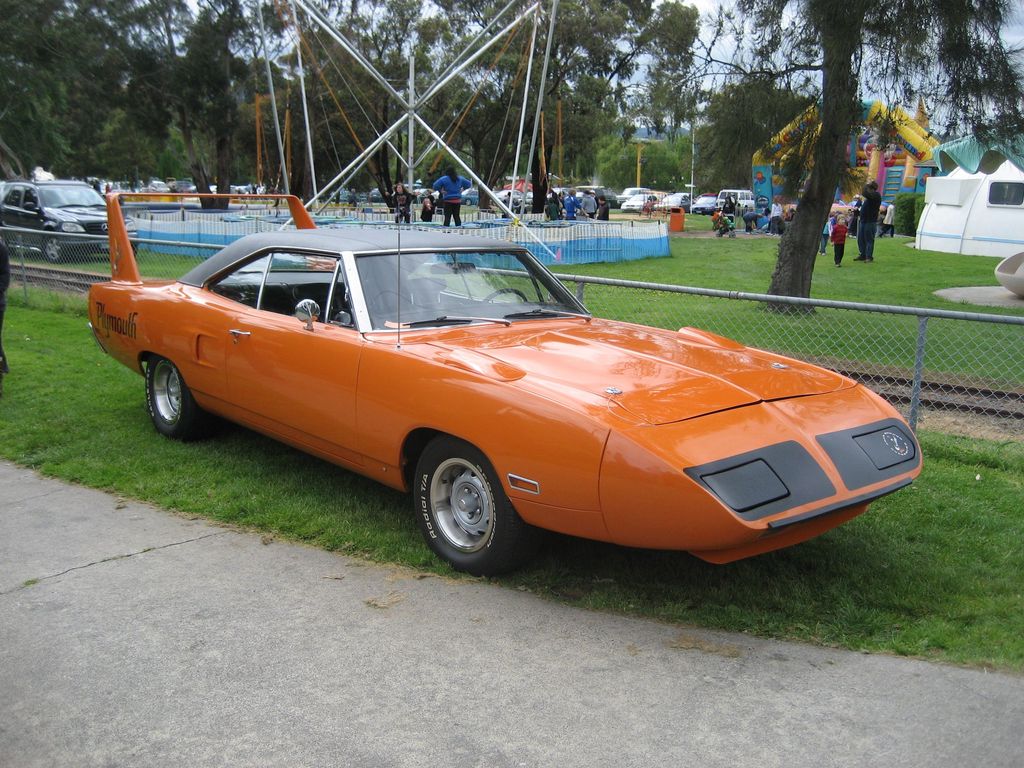
13. **1970 Plymouth Superbird**The 1970 Plymouth Superbird is arguably one of the most visually extreme and functionally driven muscle cars ever conceived. Born not just for the street but for outright domination on NASCAR’s high-speed oval tracks, its design was revolutionary. It transformed a standard Plymouth into an aerodynamic marvel, truly looking like it belonged to a different species of automotive evolution.
What made the Superbird iconic were its unmistakable, outlandish aerodynamic features. It boasted an enormous, towering rear wing, designed for crucial downforce at breakneck speeds, and a distinctive, elongated nose cone that sliced through the air with incredible efficiency. These were not merely cosmetic; they were crucial engineering elements honed in wind tunnels, crafted to give Plymouth a decisive edge in stock car racing.
Beneath its radical, race-bred exterior, the Superbird packed serious horsepower, ready to unleash its full fury. While specific engine details are often tied to its racing homologation, it certainly housed potent V8 options, ensuring its futuristic looks were matched by equally potent performance. It was a machine built for speed, embodying the era’s no-compromise approach to automotive engineering where winning on Sunday translated to sales on Monday.
Read more about: Cruising Through Time: The 12 Dream Machines of the 1960s and 1970s That Defined Automotive Greatness
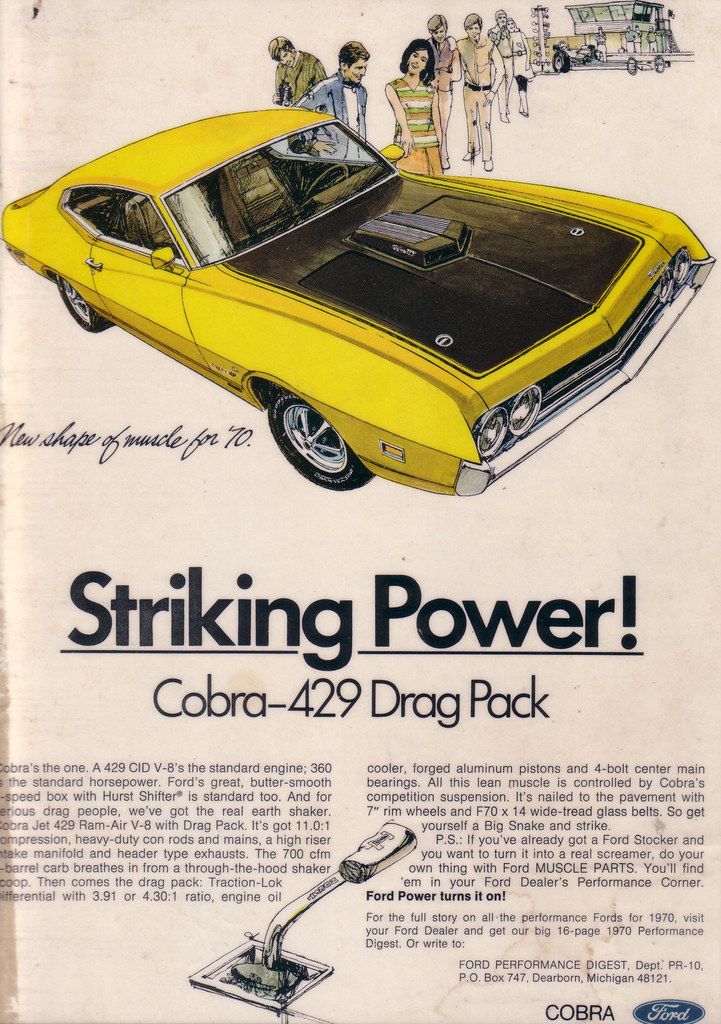
14. **1970 Ford Torino Cobra**The 1970 Ford Torino Cobra entered the muscle car arena with a formidable NASCAR pedigree, distinguishing itself as a serious contender. It was honed for performance on both the racetrack and the streets of America. Far from being just another full-size Ford, the Torino Cobra combined a sleek, fastback design with the kind of raw power that could make any enthusiast’s heart pound, representing Ford’s robust commitment to performance.
Visually, the Torino Cobra exuded a sense of understated power. Its sleek, fastback body lines were both aerodynamic and aesthetically pleasing, hinting at its high-speed capabilities. While perhaps not as overtly flamboyant as some rivals, its aggressive stance and purposeful styling conveyed an undeniable sense of muscle. It was a car that commanded respect without needing to shout for attention, blending utility with a powerful aesthetic masterfully.
Under the hood, the Torino Cobra offered formidable engine options, most notably the available 429 Cobra Jet V8. This powerhouse delivered impressive horsepower and torque, ensuring that the car was a force to be reckoned with on any straightaway. Its robust mechanicals and engineering focus on exhilarating performance made it a favorite among those who appreciated a blend of track-proven capability and street-ready power, showcasing its true muscle car spirit.
Car Model Information: 2024 Honda Civic LX
Aka: Ford Fairlane (Venezuela)
Name: Ford Torino
Caption: 1970 Ford Torino Cobra SportsRoof
Manufacturer: Ford Motor Company
Production: 1968–1976
Class: Mid-size car,muscle car
Layout: FR layout
Related: Mercury Montego
Assembly: ubl
Predecessor: Ford Fairlane (Americas)
Successor: Ford LTD II
Categories: 1960s cars, 1970s cars, All Wikipedia articles written in American English, All articles with vague or ambiguous time, Articles with short description
Summary: The Ford Torino is an automobile that was produced by Ford for the North American market between 1968 and 1976. It was a competitor in the intermediate market segment and essentially a twin to the Mercury Montego line.
Just as the Ford LTD had been the upscale version of the Ford Galaxie, the Torino was initially an upscale variation of the intermediate-sized Ford Fairlane. In the 1968 and 1969 model years, the intermediate Ford line consisted of lower-trim Fairlanes and its subseries, the upper-trim Torino models. In 1970, Torino became the primary name for Ford’s intermediate, and the Fairlane was now a subseries of the Torino. In 1971, the Fairlane name was dropped altogether, and all Ford intermediates were called Torino.
Most Torinos were conventional cars, and generally the most popular models were the four-door sedans and two-door hardtops. However, Ford produced some high-performance “muscle car” versions of the Torino by fitting them with large powerful engines, such as the 428 cu in (7.0 L) and 429 cu in (7.0 L) “Cobra-Jet” engines. Ford also chose the Torino as the base for its NASCAR entrants, and it has a successful racing heritage.
Get more information about: Ford Torino
Buying a high-performing used car >>>
Brand: Ford Model: Torino Cobra
Price: $21,650 Mileage: 17,979 mi.
Read more about: Burning Rubber and Breaking Hearts: 15 Iconic 1970s Muscle Cars That Still Reign Supreme

15. **1970 Chevrolet Camaro Z28**The 1970 Chevrolet Camaro Z28 stands as one of the most iconic and enduring muscle cars to ever grace American roads. This definitive statement from Chevrolet perfectly encapsulated the spirit of speed, style, and accessible performance. The second-generation Camaro arrived with a fresh, aggressive design and an unyielding focus on handling and power, quickly cementing its legendary status among enthusiasts. It was engineered to be a true driver’s car.
The Z28 package, introduced with the 1970 model, was specifically engineered to transform the already capable Camaro into a track-ready machine while remaining perfectly at home on public roads. It featured a high-revving 350 cubic inch V8 engine that produced an impressive 360 horsepower, optimized for spirited driving and responsiveness. This dedication to performance ensured that the Z28 was not just fast, but incredibly engaging to drive, offering a dynamic balance of power and agility.
Aesthetically, the 1970 Camaro Z28 introduced a stunning new design, moving towards a more European-inspired, sleek, and aggressive silhouette. Its distinctive split grille, long hood, and short deck, combined with its wide stance, gave it an unmistakable presence. This sharp design, along with its timeless appeal, made it an instant classic and a favorite among car enthusiasts who appreciated both form and function, a true benchmark.
Car Model Information: 2024 Honda Civic LX
Name: Chevrolet Camaro
Manufacturer: Chevrolet
Production: 1966–2002,2009–2023
ModelYears: 1967–2002,2010–2024
Class: Pony car
BodyStyle: coupe,convertible
Platform: GM F platform,GM Zeta platform,GM Alpha platform
Layout: Front-engine, rear-wheel-drive layout
Categories: 1970s cars, 1980s cars, 1990s cars, 2+2 coupés, 2000s cars
Summary: The Chevrolet Camaro is a mid-size American automobile manufactured by Chevrolet, classified as a pony car. It first went on sale on September 29, 1966, for the 1967 model year and was designed to compete with the Ford Mustang. The Camaro shared its platform and major components with the Firebird, produced by General Motors’ Pontiac division that was also introduced for the 1967 model year.
Four distinct generations of the Camaro were developed before production ended in 2002. The nameplate was revived on a concept car that evolved into the fifth-generation Camaro; production started on March 16, 2009.
Production of the sixth generation of the Camaro ended in December 2023, for the 2024 model year.
Get more information about: Chevrolet Camaro
Buying a high-performing used car >>>
Brand: Chevrolet Model: Camaro Z28
Price: $21,650 Mileage: 17,979 mi.
Read more about: Burning Rubber and Breaking Hearts: 15 Iconic 1970s Muscle Cars That Still Reign Supreme
As we bring our journey through the roaring 1970s to a close, it’s clear that this decade wasn’t just a fleeting moment in automotive history. It was a defining era where creativity, engineering prowess, and an unbridled passion for performance converged. From the understated power of a Buick GSX to the outrageous aerodynamics of a Plymouth Superbird, each of these muscle car titans tells a compelling story of ambition, innovation, and an unwavering commitment to the thrill of the open road. These machines, whether icons of the silver screen or rare collector’s finds, continue to turn heads and ignite imaginations, proving that true legends never really fade. So, which of these magnificent beasts would find a home in your garage? The choice, as always, is a powerful one.

